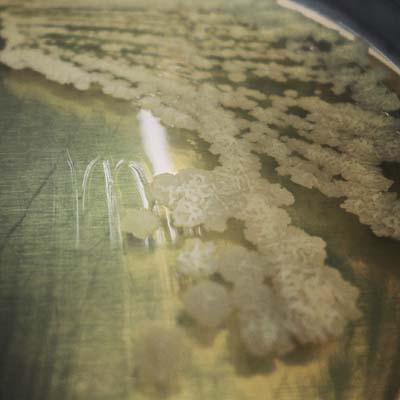Mycobacterium smegmatis Structure and Physiology
This bacteria is an acid-fast, bacillus-shaped, aerobic microorganism that is commonly used a surrogate model for M. tuberculosis and is found in soil, plants, and water.
Mycobacterium smegmatis Transmission and Disease
M. smegmatis is non-pathogenic to humans except in rare cases, and is considered saprophytic. Unlike other pathogenic Mycobacterium, M. smegmatis isn’t dependent on living in animals.
Mycobacterium smegmatis Disinfection
M. smegmatis shares a number of morphological traits with M. tuberculosis including the distinctive waxy cell wall that provides a robust resistance to chemical disinfectants and sanitizers.
Notes
The quick growth rate of this microorganism is ideal for in-vitro testing, as other bacteria in this Genus may take several weeks to demonstrate growth. Due to the non-pathogenic nature of this organism, it is used as a M. tuberculosis model for aerosol disinfection testing.
Reference
- Gordon, Ruth E., and Mildred M. Smith. “RAPIDLY GROWING, ACID FAST BACTERIA I.: Species’ Descriptions of Mycobacterium phlei Lehmann and Neumann and Mycobacterium smegmatis (Trevisan) Lehmann and Neumann1.” Journal of bacteriology 66.1 (1953): 41.

